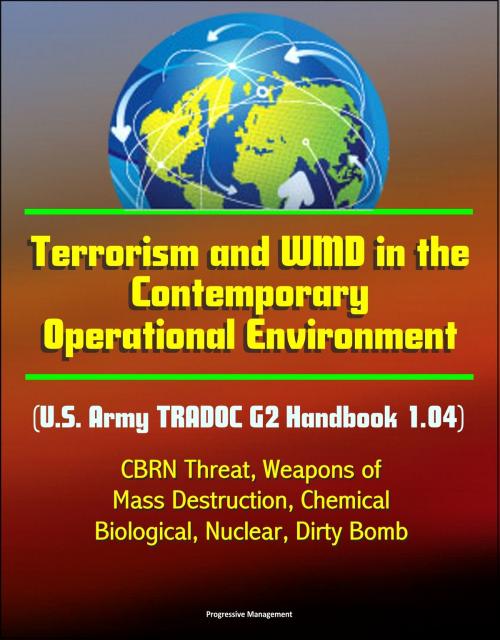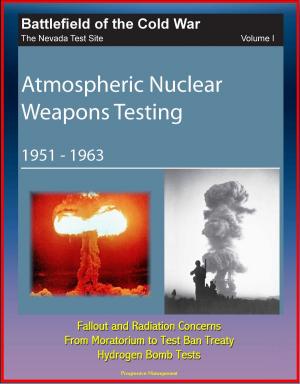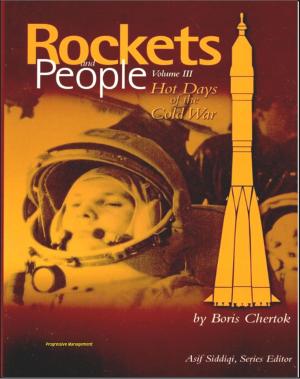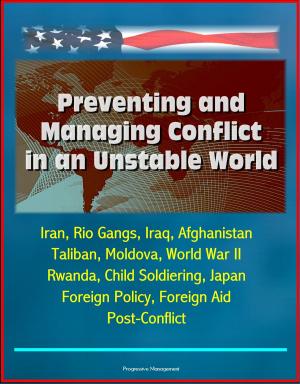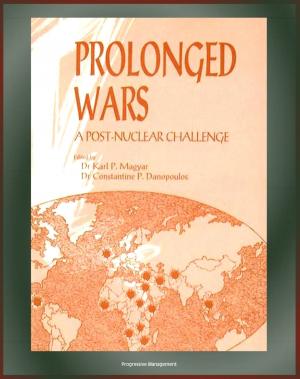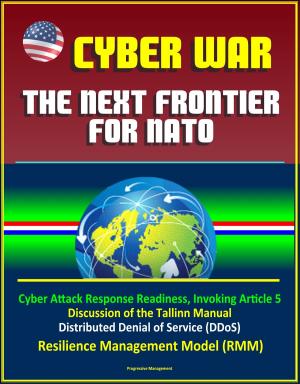Terrorism and WMD in the Contemporary Operational Environment (U.S. Army TRADOC G2 Handbook 1.04) - CBRN Threat, Weapons of Mass Destruction, Chemical, Biological, Nuclear, Dirty Bomb
Nonfiction, History, Military, Nuclear Warfare, Social & Cultural Studies, Political Science| Author: | Progressive Management | ISBN: | 9781310804182 |
| Publisher: | Progressive Management | Publication: | January 13, 2015 |
| Imprint: | Smashwords Edition | Language: | English |
| Author: | Progressive Management |
| ISBN: | 9781310804182 |
| Publisher: | Progressive Management |
| Publication: | January 13, 2015 |
| Imprint: | Smashwords Edition |
| Language: | English |
Terrorism and WMD in the Contemporary Operational Environment is a supplemental handbook to the U.S. Army Training and Doctrine Command, TRADOC G2 capstone reference guide on terrorism, TRADOC G2 Handbook No. 1, A Military Guide to Terrorism in the Twenty-First Century. Understanding terrorism and weapons of mass destruction (WMD) span foreign and domestic threats in strategy, tactics, and targets in a full spectrum contemporary operational environment (COE). Terrorism against the United States of America could include use of chemical, biological, radiological, nuclear, or high yield explosive (CBRNE) weapons. This informational handbook supports operational missions, institutional training, and professional military education for U.S. military forces in the War on Terrorism (WOT). This document promotes an improved understanding of terrorist objectives and motivation, and terrorist intention to use WMD. Compiled from open source materials, this handbook promotes a "Threats" perspective and enemy situational awareness of U.S. actions in combating terrorism. This handbook exists primarily for U.S. military members in operational units and installation-institutional activities. Other groups of interest include interdepartmental, interagency, intergovernmental, civilian contractor, or nongovernmental, private volunteer, and humanitarian relief organizations, and the general citizenry.
Study of contemporary terrorist motivations and behavior, terrorist goals and objectives, and knowledge of terrorist historical or emergent tactics, techniques, and procedures (TTP) improves training awareness and readiness. A selected bibliography presents citations for detailed study of specific terrorism topics. Unless stated otherwise, nouns or pronouns do not refer exclusively to a specific gender.
INTRODUCTION * Purpose * Defining Terrorism * Scoping the Issue: Terrorism and WMD * Understanding Operational Environment * SECTION I: CBRN THREATS AND TERRORISM * Recognizing the CBRN Threat Spectrum * Appreciating WMD Terror in the COE * Describing Threats and WMD * Assessing Terrorist Vulnerabilities * SECTION II: WEAPONS OF MASS DESTRUCTION * General * Dual Use and WMD Danger * Chemical Weapons * Toxic Industrial Material (TIM) * Biological Weapons * Categories of Biological Warfare Agents * Dissemination of Effects * Masking a Biological Danger * Radiological Weapons * Categories of Radiological Dissemination * "Dirty Bomb" Danger * Nuclear Weapons * Peril of Nuclear Material * Sinister "Suitcase" Phobia * High Yield Explosives * Simple Means with Mass Effects * SECTION III: CBRN TERRORISM IN THE COE * Know the Enemy and WMD Capability * Prepare for Action: Deployed, In-Transit, and Institutional Forces * CBRN Trends in the Foreseeable Future * The War on Terror and Way Ahead
Terrorism and WMD in the Contemporary Operational Environment is a supplemental handbook to the U.S. Army Training and Doctrine Command, TRADOC G2 capstone reference guide on terrorism, TRADOC G2 Handbook No. 1, A Military Guide to Terrorism in the Twenty-First Century. Understanding terrorism and weapons of mass destruction (WMD) span foreign and domestic threats in strategy, tactics, and targets in a full spectrum contemporary operational environment (COE). Terrorism against the United States of America could include use of chemical, biological, radiological, nuclear, or high yield explosive (CBRNE) weapons. This informational handbook supports operational missions, institutional training, and professional military education for U.S. military forces in the War on Terrorism (WOT). This document promotes an improved understanding of terrorist objectives and motivation, and terrorist intention to use WMD. Compiled from open source materials, this handbook promotes a "Threats" perspective and enemy situational awareness of U.S. actions in combating terrorism. This handbook exists primarily for U.S. military members in operational units and installation-institutional activities. Other groups of interest include interdepartmental, interagency, intergovernmental, civilian contractor, or nongovernmental, private volunteer, and humanitarian relief organizations, and the general citizenry.
Study of contemporary terrorist motivations and behavior, terrorist goals and objectives, and knowledge of terrorist historical or emergent tactics, techniques, and procedures (TTP) improves training awareness and readiness. A selected bibliography presents citations for detailed study of specific terrorism topics. Unless stated otherwise, nouns or pronouns do not refer exclusively to a specific gender.
INTRODUCTION * Purpose * Defining Terrorism * Scoping the Issue: Terrorism and WMD * Understanding Operational Environment * SECTION I: CBRN THREATS AND TERRORISM * Recognizing the CBRN Threat Spectrum * Appreciating WMD Terror in the COE * Describing Threats and WMD * Assessing Terrorist Vulnerabilities * SECTION II: WEAPONS OF MASS DESTRUCTION * General * Dual Use and WMD Danger * Chemical Weapons * Toxic Industrial Material (TIM) * Biological Weapons * Categories of Biological Warfare Agents * Dissemination of Effects * Masking a Biological Danger * Radiological Weapons * Categories of Radiological Dissemination * "Dirty Bomb" Danger * Nuclear Weapons * Peril of Nuclear Material * Sinister "Suitcase" Phobia * High Yield Explosives * Simple Means with Mass Effects * SECTION III: CBRN TERRORISM IN THE COE * Know the Enemy and WMD Capability * Prepare for Action: Deployed, In-Transit, and Institutional Forces * CBRN Trends in the Foreseeable Future * The War on Terror and Way Ahead
